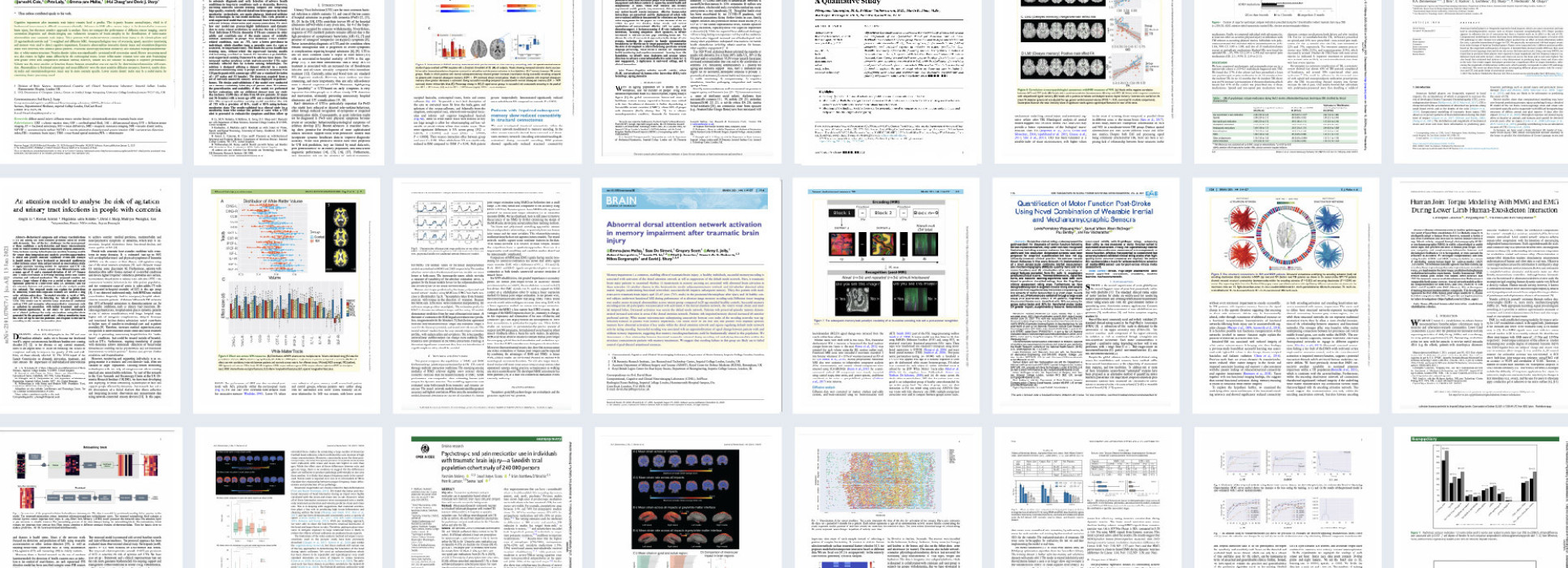
Results
- Showing results for:
- Reset all filters
Search results
-
Journal articleHine C, Nilforooshan R, Barnaghi P, 2022,
Ethical considerations in design and implementation of home-based smart care for dementia
, Nursing Ethics: an international journal for health care professionals, Vol: 29, Pages: 1035-1046, ISSN: 0969-7330It has now become a realistic prospect for smart care to be provided at home for those living with long-term conditions such as dementia. In the contemporary smart care scenario, homes are fitted with an array of sensors for remote monitoring providing data that feed into intelligent systems developed to highlight concerning patterns of behaviour or physiological measurements and to alert healthcare professionals to the need for action. This paper explores some ethical issues that may arise within such smart care systems, focusing on the extent to which ethical issues can be addressed at the system design stage. Artificial intelligence has been widely portrayed as an ethically risky technology, posing challenges for privacy and human autonomy and with the potential to introduce and exacerbate bias and inequality. While broad principles for ethical artificial intelligence have become established, the mechanisms for governing ethical artificial intelligence are still evolving. In healthcare settings the implementation of smart technologies falls within the existing frameworks for ethical review and governance. Feeding into this ethical review there are many practical steps that designers can take to build ethical considerations into the technology. After exploring the pre-emptive steps that can be taken in design and governance to provide for an ethical smart care system, the paper reviews the potential for further ethical challenges to arise within the everyday implementation of smart care systems in the context of dementia, despite the best efforts of all concerned to pre-empt them. The paper concludes with an exploration of the dilemmas that may thus face healthcare professionals involved in implementing this kind of smart care and with a call for further research to explore ethical dimensions of smart care both in terms of general principles and lived experience.
-
PatentQingju L, Barnaghi P, 2021,
IoT-based intelligent bed sensor system for contactless respiratory rate monitoring
-
Journal articleDavid M, Barnaghi P, Nilforooshan R, et al., 2021,
Home monitoring of vital signs and generation of alerts in a cohort of people living with dementia
, Alzheimer's & dementia : the journal of the Alzheimer's Association, Vol: 17BACKGROUND: People with dementia (PwD) are at increased risk of adverse medical events (e.g. infections and falls). These often cause clinical deterioration, and potentially preventable admissions. Remote home monitoring of vital signs using internet-of-things technology can identify risk factors for these events - something particular pertinent during the COVID-19 pandemic. We present data from an on-going UK Dementia Research Institute and Technology Integrated Health Management (DRI-TIHM) project. We aim to define algorithms that generate automated alerts, like the hospital-based NEWS system (Morgan, 1997, Clin Intensive Car), and provide more proactive care for PwD. METHOD: PwD recorded their systolic/diastolic blood pressure (SBP/DBP), heart rate (HR), temperature (BTM), bodyweight (BW) and oxygen saturation (Sats) daily (figure 1) and data were collected centrally. A 'monitoring team' followed algorithms in response to alerts and advised medical attention if required. Events such as infections, were logged and correlated with the data. The dataset was then used to calculate the number of alerts that would have been raised if different thresholds were used. RESULT: 52 PwD living at home were included. Patients had a range of dementia diagnoses, most commonly Alzheimer's disease. In total, 89,894 measurements were collected over 556 days (figure 2). During the pandemic, a sub-group were given Sats probes and these produced a significant number of false positive results (figure 4f). On sub-group analysis, PwD with Parkinson's disease dementia had significantly lower SBP and DBP (p=0.004 and p=0.01 respectively, Mann-Whitney U) (figure 3a), one of whom suffered from repeated falls (figure 3b). Pilot data were used to set alert thresholds. Average values and number of alerts for each domain are shown (table 1). We then modelled the effect of different thresholds, based on NEWS, to the number of alerts generated (figure 4, table 2). This is informative in optimising
-
Journal articleFletcher-Lloyd N, Soreq E, Wilson D, et al., 2021,
Home monitoring of daily living activities and prediction of agitation risk in a cohort of people living with dementia.
, Alzheimers & Dementia, Vol: 17, Pages: 1-1, ISSN: 1552-5260BACKGROUND: People living with dementia (PLWD) have an increased susceptibility to developing adverse physical and psychological events. Internet of Things (IoT) technologies provides new ways to remotely monitor patients within the comfort of their homes, particularly important for the timely delivery of appropriate healthcare. Presented here is data collated as part of the on-going UK Dementia Research Institute's Care Research and Technology Centre cohort and Technology Integrated Health Management (TIHM) study. There are two main aims to this work: first, to investigate the effect of the COVID-19 quarantine on the performance of daily living activities of PLWD, on which there is currently little research; and second, to create a simple classification model capable of effectively predicting agitation risk in PLWD, allowing for the generation of alerts with actionable information by which to prevent such outcomes. METHOD: A within-subject, date-matched study was conducted on daily living activity data using the first COVID-19 quarantine as a natural experiment. Supervised machine learning approaches were then applied to combined physiological and environmental data to create two simple classification models: a single marker model trained using ambient temperature as a feature, and a multi-marker model using ambient temperature, body temperature, movement, and entropy as features. RESULT: There are 102 PLWD total included in the dataset, with all patients having an established diagnosis of dementia, but with ranging types and severity. The COVID-19 study was carried out on a sub-group of 21 patient households. In 2020, PLWD had a significant increase in daily household activity (p = 1.40e-08), one-way repeated measures ANOVA). Moreover, there was a significant interaction between the pandemic quarantine and patient gender on night-time bed-occupancy duration (p = 3.00e-02, two-way mixed-effect ANOVA). On evaluating the models using 10-fold cross validation, both th
-
Journal articleRezvani R, Kouchaki S, Nilforooshan R, et al., 2021,
Analysing behavioural changes in people with dementia using in-home monitoring technologies.
, Alzheimers & Dementia, Vol: 17 Suppl 11, Pages: e052181-e052181, ISSN: 1552-5260BACKGROUND: Behavioural changes and neuropsychiatric symptoms such as agitation are common in people with dementia. These symptoms impact the quality of life of people with dementia and can increase the stress on caregivers. This study aims to identify the likelihood of having agitation in people affected by dementia (i.e., patients and carers) using routinely collected data from in-home monitoring technologies. We have used a digital platform and analytical methods, developed in our previous study, to generate alerts when changes occur in the digital markers collected using in-home sensing technologies (i.e., vital signs, environmental and activity data). A care monitoring team use the platform and interact with participants and caregivers when an alert is generated. METHOD: We have used connected sensory devices to collect environmental markers, including Passive Infra-Red (PIR), smart power plugs for monitoring home appliance use, motion and door sensors. The environmental marker data have been aggregated within each hour and used to train an agitation risk analysis model. We have trained a model using data collected from 88 homes (∼6 months of data from each home). The proposed model has two components: a self-supervised transformation learning and an ensemble classification model for agitation likelihood. Ten different neural network encoders are learned to create pseudo-labels using the samples from the unlabelled data. We use these pseudo-labels to train a classification model with a convolutional block and a decision layer. The trained convolutional block is then used to learn a latent representation of the data for an ensemble classification block. RESULTS: Comparing with baseline models such as LSTM network, Bidirectional LSTM (BiLSTM) network, VGG, ResNet, Inception, Random Forest (RF), Support Vector Machine (SVM) and Gaussian Process (GP) classifiers, the proposed model performs better in sensitivity (recall) and area under the precision-recall curv
This data is extracted from the Web of Science and reproduced under a licence from Thomson Reuters. You may not copy or re-distribute this data in whole or in part without the written consent of the Science business of Thomson Reuters.
Awards
- Finalist: Best Paper - IEEE Transactions on Mechatronics (awarded June 2021)
- Finalist: IEEE Transactions on Mechatronics; 1 of 5 finalists for Best Paper in Journal
- Winner: UK Institute of Mechanical Engineers (IMECHE) Healthcare Technologies Early Career Award (awarded June 2021): Awarded to Maria Lima (UKDRI CR&T PhD candidate)
- Winner: Sony Start-up Acceleration Program (awarded May 2021): Spinout company Serg Tech awarded (1 of 4 companies in all of Europe) a place in Sony corporation start-up boot camp
- “An Extended Complementary Filter for Full-Body MARG Orientation Estimation” (CR&T authors: S Wilson, R Vaidyanathan)

Established in 2017 by its principal funder the Medical Research Council, in partnership with Alzheimer's Society and Alzheimer’s Research UK, The UK Dementia Research Institute (UK DRI) is the UK’s leading biomedical research institute dedicated to neurodegenerative diseases.


